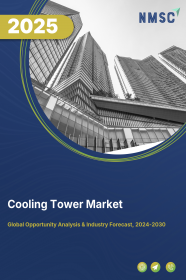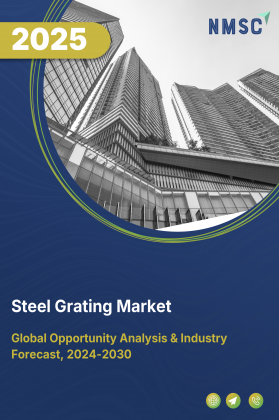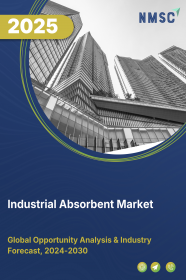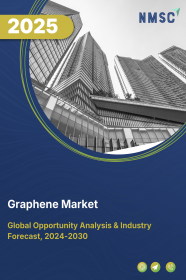
Cooling Tower Market by Type (Wet, Dry, and Hybrid), By Product (Round Bottle, Square Bottle, Cross Flow, Counter Flow and Others), By Material (Concrete, Steel, Wood and Fiber Reinforced Plastic), By Design (Mechanical Draft and Natural Draft), By Technology (Open Circuit, Closed Circuit and Hybrid), By Heat Transfer Method (Evaporative Cooling Towers, Dry Cooling Towers and Plume Abatement Cooling Towers and Others)–Global Opportunity Analysis and Industry Forecast 2024-2030
Cooling Tower Market Overview
The global Cooling Tower Market size was valued at USD 3.49 billion in 2023 and is predicted to reach USD 4.69 billion by 2030, with a CAGR of 4.3% from 2024-2030. The cooling tower market encompasses the production and distribution of devices designed to dissipate excess heat from industrial processes or HVAC systems. These towers facilitate the transfer of heat to the atmosphere through evaporative cooling, ensuring optimal operational temperatures for machinery and equipment.
Their features include robust construction, efficient heat exchange mechanisms, and scalability to suit various applications. The advantages include energy efficiency, cost-effectiveness, and environmental sustainability compared to alternative cooling methods. These towers are widely used in power plants, manufacturing facilities, and commercial buildings. It plays a crucial role in maintaining equipment performance, enhancing productivity, and minimizing environmental impact by reducing water consumption and energy usage.
Market Dynamic and Trends
The significant growth of chemical industry driven by the need for reliable and energy-efficient cooling solutions, accelerates the demand of cooling tower. Chemical manufacturing processes generate heat that accelerates its market growth to remove excess heat from industrial processes, such as chemical reactors, distillation columns, and heat exchangers, ensuring efficient operation of the equipment.
According to World Business Council for Sustainable Development, 2021, the global chemical industry is around USD 4 trillion and employs around 20 million people. The flourishing chemical industry propels the demand for these towers as it provides efficient and reliable cooling solutions to support various manufacturing processes and maintain operational efficiency.
Additionally, the rising consumption of frozen food is increasing the need for efficient and reliable refrigeration systems in food processing and storage facilities, thus propelling the growth of the market. Frozen food industry requires precise temperature control for food processing, storage, preservation and transportation that boosts up the demand of cooling tower as it provides chilled water for refrigeration systems and cold storage facilities.
According to International Institute of Refrigeration Report, 2022, the global frozen food market is witnessing significant growth that generated a revenue of around USD 392.4 billion and is expected to USD 612.3 billion by 2032. As the global demand for frozen food continues to rise it propels the market growth as they help in maintaining low temperature essential for food processing, preservation, and cold storage, ensure product quality and extend shelf life.
Moreover, the growing water scarcity is driving the demand for cooling tower as industries seek sustainable solutions to minimize water usage in their operations. These towers offer a viable alternative to water-intensive cooling methods by utilizing evaporative cooling processes that requires significantly less water compared to traditional methods including once-through cooling systems.
According to UN Environment by 2025, around 1.8 billion people are likely to face absolute water scarcity. The surge in water scarcity, necessities industries to adopt more water-efficient cooling solutions that propels the market growth to minimize water consumption.
However, cooling tower require regular maintenance to prevent scaling, corrosion, and biofouling, that decrease their efficiency, and lifespan, acts as a significant barrier to the market growth. On the other hand, the integration of IoT (Internet of Things) sensors such as temperature sensors, flow sensors and analytics in cooling tower for allowing real-time monitoring of performance and predictive maintenance to optimize efficiency and prevent downtime is expected to create ample growth opportunities for the market.
Market Segmentation and Scope of the Study
The cooling tower market report is segmented on the basis of type, components, design, technology, application and region. On the basis of type, the market is divided into wet, dry, and hybrid. On the basis of components, the market is divided into concrete, steel, wood, and fiber reinforced plastic. On the basis of design, the market is divided into mechanical draft, and natural draft. On the basis of technology, the market is divided into open circuit, closed circuit, and hybrid. On the basis of application, the market is bifurcated into chemical & petrochemical, pharmaceutical, power generation, HVAC, food & beverage, and others. Regional breakdown and analysis of each of the aforesaid segments include regions comprising North America, Europe, Asia-Pacific, and RoW.
Geographical Analysis
Asia Pacific dominates the cooling tower market share and is projected to maintain its dominance throughout the forecast period. This is due to the significant growth of the manufacturing sector in countries such as China and India, where rapid industrialization and economic development led to the rise in the market growth to support diverse industrial processes and infrastructure expansion.
According to State Council Information Office, 2023, manufacturing sector is the biggest contributor in the GDP of China that accounts for 27.7% of its GDP. This cooling system allows efficient heat dissipation, equipment cooling, process cooling in manufacturing industry accelerating its demand in the region. Manufacturing processes generate considerable heat, necessitating effective cooling solutions to efficiently remove heat and sustain the optimal operation of this sector.
Moreover, the rising scarcity of water in the region drives the need for sustainable cooling solutions to minimize the water consumption level by the industrial sectors, that in turn is accelerating the market demand. As water resources become increasingly limited, industries are compelled to adopt technologies such as cooling tower, that offer efficient heat dissipation while reducing reliance on water-intensive cooling methods.
According to World Bank Report, 2023, 18 percent of the world’s population resides in India but only 4 percent of water resources is present in the country, making it among the most water-stressed region in the world. These towers offer flexibility in sourcing water as they can utilize a variety of water sources, including recycled wastewater, brackish water, or even seawater accelerating its demand in the region.
On the other hand, North America is expected to show a steady rise in the cooling tower market. This is due to the presence of the highest number of data centers cooling in the region, that rely heavily on efficient cooling systems to maintain optimal operating temperatures for their servers and equipment. Data centers typically operate 24/7 to ensure uninterrupted access to digital services that leads to continuous heat generation, necessitating the demand of such towers to provide reliable and energy-efficient cooling solutions to maintain stable operating conditions.
According to the report of McKinsey & Company, 2023, U.S. holds around 40% of the global data centers leading to electricity consumption to reach 35GW by 2030 from 17GW in 2022. The growing numbers of the data centers in the region dissipate heat generated by servers, networking equipment, and other IT infrastructure boosting up the market growth to maintain optimal operating temperatures and prevent equipment failures in data center facilities.
Furthermore, the expanding food and beverage market fuels the necessity for reliable refrigeration and cooling systems in food processing and storage facilities, thus accelerating the growth of the market. Cooling tower play a crucial role in these facilities by dissipating heat generated during refrigeration processes, ensuring consistent temperatures and preserving perishable goods.
In 2022, the food and beverage processing sector was the leading manufacturing industry by production value that generated around USD 156.5 billion revenue representing around 18.2% of total manufacturing sales in Canada. With increasing growth of food & beverage industry it boosts up the demand of these towers in the region as it helps in maintaining optimal temperatures during production, storage, and distribution.
Competitive Landscape
The cooling tower market comprises of various industry players such as Baltimore Aircoil Company, Inc., Krones AG , SPX Cooling Tech, LLC, Metso Corporation, Motto Tech Industries Pvt Ltd., Johnson Control International plc, Reymsa Cooling Tower Inc., Tower Tech Cooling System Pvt. Ltd., Thermax Limited, Artech Cooling Towers Pvt. Ltd., Delta Cooling Towers, Inc., JUMO Process Control, Inc. , Brentwood Industries, Inc. , Hamon Cooling Systems, Paharpur Cooling Towers Ltd. These market players are adopting various strategies including product launches and acquisition to stay competitive and maintain their market positions.
For instance, in November, 2023, Metso launched upgraded evaporative cooling tower that offered an efficient cooling and process control solution for furnace dry gas cleaning applications. This product launch provided enhanced performance and control capabilities that catered to the evolving needs of industries requiring effective cooling solutions.
Also, in January, 2023, Atlas SSI acquired of Cooling Tower Valves and Screens LLC, to expand its portfolio and strengthened its position in the market. This acquisition enabled Atlas SSI to offer a comprehensive range of products and solutions to meet the diverse needs of customers in the industry.
Moreover, in September, 2022, Tower Tech launched composite cooling tower that featured Storm Strong Fiber Reinforced Polymer (FRP) corrosion-resistant technology to combat climate change and severe weather. This product launch aligned with the industry's growing emphasis on sustainability and climate resilience and provided a reliable solution for cooling system needs while reducing environmental impact.
Key Benefits
-
The report provides quantitative analysis and estimations of the cooling tower market from 2024 to 2030, which assists in identifying the prevailing market opportunities.
-
The study comprises a deep dive analysis of the cooling tower market including the current and future trends to depict prevalent investment pockets in the industry.
-
Information related to key drivers, restraints, and opportunities and their impact on the cooling tower market is provided in the report.
-
Competitive analysis of the key players, along with their market share is provided in the report.
-
SWOT analysis and Porters Five Forces model is elaborated in the study.
-
Value chain analysis in the market study provides a clear picture of roles of stakeholders.
Cooling Tower Market Key Segments
By Type
-
Wet
-
Dry
-
Hybrid
By Product
-
Round Bottle
-
Square Bottle
-
Cross Flow
-
Counter Flow
-
Others
By Material
-
Concrete
-
Steel
-
Wood
-
Fiber Reinforced Plastic
By Design
-
Mechanical draft
-
Natural draft
By Technology
-
Open Circuit
-
Closed Circuit
-
Hybrid
By Heat Transfer Method
-
Evaporative Cooling Towers
-
Dry Cooling Towers
-
Plume Abatement Cooling Towers
By End User Industry
-
Chemical & Petrochemical
-
Pharmaceutical
-
Power Generation
-
HVAC
-
Food & Beverage
-
Others
By Region
-
North America
-
The U.S.
-
Canada
-
Mexico
-
-
Europe
-
The UK
-
Germany
-
France
-
Italy
-
Spain
-
Denmark
-
Netherlands
-
Finland
-
Sweden
-
Norway
-
Russia
-
Rest of Europe
-
-
Asia Pacific
-
China
-
Japan
-
India
-
South Korea
-
Australia
-
Indonesia
-
Singapore
-
Taiwan
-
Thailand
-
Rest of Asia Pacific
-
-
RoW
-
Latin America
-
Middle East
-
Africa
-
REPORT SCOPE AND SEGMENTATION
|
Parameters |
Details |
|
Market Size in 2023 |
USD 3.49 billion |
|
Revenue Forecast in 2030 |
USD 4.69 billion |
|
Growth Rate |
CAGR of 4.3% from 2024 to 2030 |
|
Analysis Period |
2023–2030 |
|
Base Year Considered |
2023 |
|
Forecast Period |
2024–2030 |
|
Market Size Estimation |
Billion (USD) |
|
Growth Factors |
|
|
Countries Covered |
28 |
|
Companies Profiled |
15 |
|
Market Share |
Available for 10 companies |
|
Customization Scope |
Free customization (equivalent up to 80 working hours of analysts) after purchase. Addition or alteration to country, regional, and segment scope. |
|
Pricing and Purchase Options |
Avail customized purchase options to meet your exact research needs. |
KEY PLAYERS
-
Baltimore Aircoil Company, Inc.
-
Krones AG
-
SPX Cooling Tech, LLC
-
Metso Corporation
-
Motto Tech Industries Pvt Ltd.
-
Johnson Control International plc
-
Reymsa Cooling Tower Inc.
-
Tower Tech Cooling System Pvt. Ltd.
-
Thermax Limited
-
Artech Cooling Towers Pvt. Ltd.
-
Delta Cooling Towers, Inc.
-
JUMO Process Control, Inc.
-
Brentwood Industries, Inc.
-
Hamon Cooling Systems
-
Paharpur Cooling Towers Ltd.




















 Speak to Our Analyst
Speak to Our Analyst

























